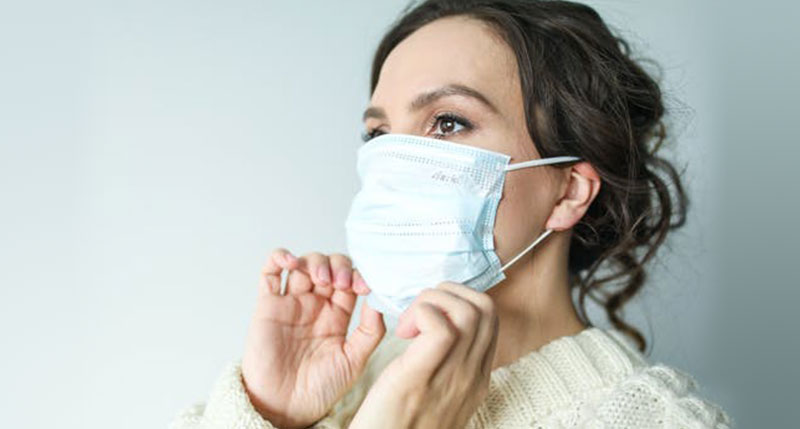It’s a strange new world where we are often asked to wear a face covering or mask to slow the spread of the novel coronavirus. Some policy experts predict we may be asked to wear masks for the next year, or even longer as we learn more about preventing and slowing this new viral threat to our collective health.
While healthcare practitioners learn the safety protocols for putting on, wearing and removing a face mask, most of us haven’t had such training. And since we’re being asked to wear face coverings on a regular basis these days if we want to go into grocery stores and other places of business, it’s a best practice to know what we’re doing so we can wear face masks with the highest level of effectiveness.
Why do we wear face masks?
A common question these days is, why are we asked to wear face masks? The reason is that cloth facial coverings can help to limit the spread of the novel coronavirus and other germs. Viruses spread through tiny liquid droplets released into the air when a person is talking, coughing or sneezing. If that person is infected with a virus—whether they’re exhibiting symptoms or not—those droplets can then be inhaled by someone else, which results in the spread of a viral infection.
We’re being asked by the Centers for Disease Control and Prevention (CDC) to wear masks to contain these droplets when we are in close quarters with other people and can’t maintain a safe social distance of 6 feet or more. Why 6 feet? That’s the estimated range that respiratory droplets can travel through the air to potentially infect another person who is breathing normally.
Because a significant percentage of people who have the novel coronavirus do not exhibit symptoms of the virus, wearing masks is a smart preventive measure that can help reduce the spread of the virus. Your cloth facial covering creates a barrier between you and others to prevent the sharing of respiratory droplets. That’s how a face covering can help keep the rate of infection as low as possible.
By wearing a mask, you are doing your part to help slow the spread of this pandemic. But are you wearing your mask correctly to maximize its effectiveness?
To help you wear and remove your face mask safely, we offer the following tips to enhance your health and safety.
How to put on a face mask properly
Step 1: Wash your hands thoroughly with soap and warm running water. If you’re not near a sink, use hand sanitizer immediately before picking up your mask.
Step 2: Take a close look at your mask. Is it clean? Are there obvious tears or holes anywhere? If it doesn’t pass your visual inspection, wear a different mask.
Step 3: Grasp the mask by its ear loops or ties—not the facial covering portion—and bring the mask toward your face at nose level.
Step 4: If your mask has ear loops, place one loop around each ear. If the mask feels loose or has gaps around your nose and mouth, try twisting the mask’s elastic ear loops before looping them around your ears, or tie them in a knot. Both of those measures effectively decrease the length of the elastic ear loops, which may improve the fit of your mask.
Step 5: If the mask ties behind your head, tie the two strings around the crown (top) of your head first and secure them in a bow. After it is secure, tie the lower strings around the lower part of your head.
Step 6: If your mask has a moldable nose bridge, pinch it firmly so it forms a close contour around your nose bridge.
Step 7: Lower the bottom of the mask, so it covers your mouth and your chin.
Remember: Don’t touch your mask while you’re wearing it, as your hands may contain germs.
When you’re ready to remove your mask, there’s a smart strategy for that also.
How to remove a face mask properly
Step 1: Wash your hands thoroughly with soap and running water, lathering them for at least 20 seconds. If you’re not near a sink, use hand sanitizer immediately before touching your mask.
Step 2: Don’t touch the front of your mask; it’s smart to consider it as potentially contaminated with germs.
Step 3: Grab both of the ear loops from behind your ears and remove them from your ears, pulling the mask carefully away from your face.
Step 4: If your face mask ties around your head, untie the bottom strings first, then untie the top strings from the crown of your head before pulling the mask away from your face.
Step 5: Once again, clean your hands by using hand sanitizer or wash and lather your hands thoroughly with soap and running water for at least 20 seconds.
By using these mask safety protocols every time, both when putting on and taking off your face covering, you’ll be doing the maximum possible to protect yourself and others from this dangerous virus. Stay safe, be well!

